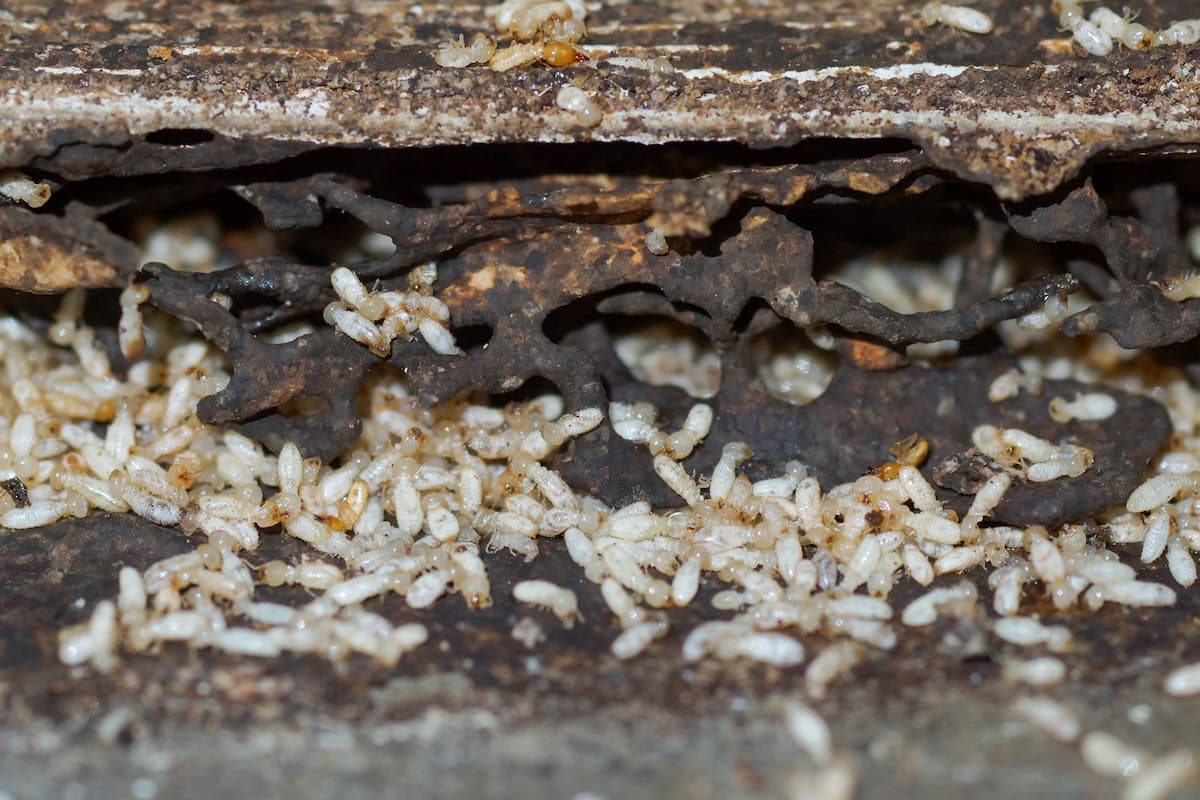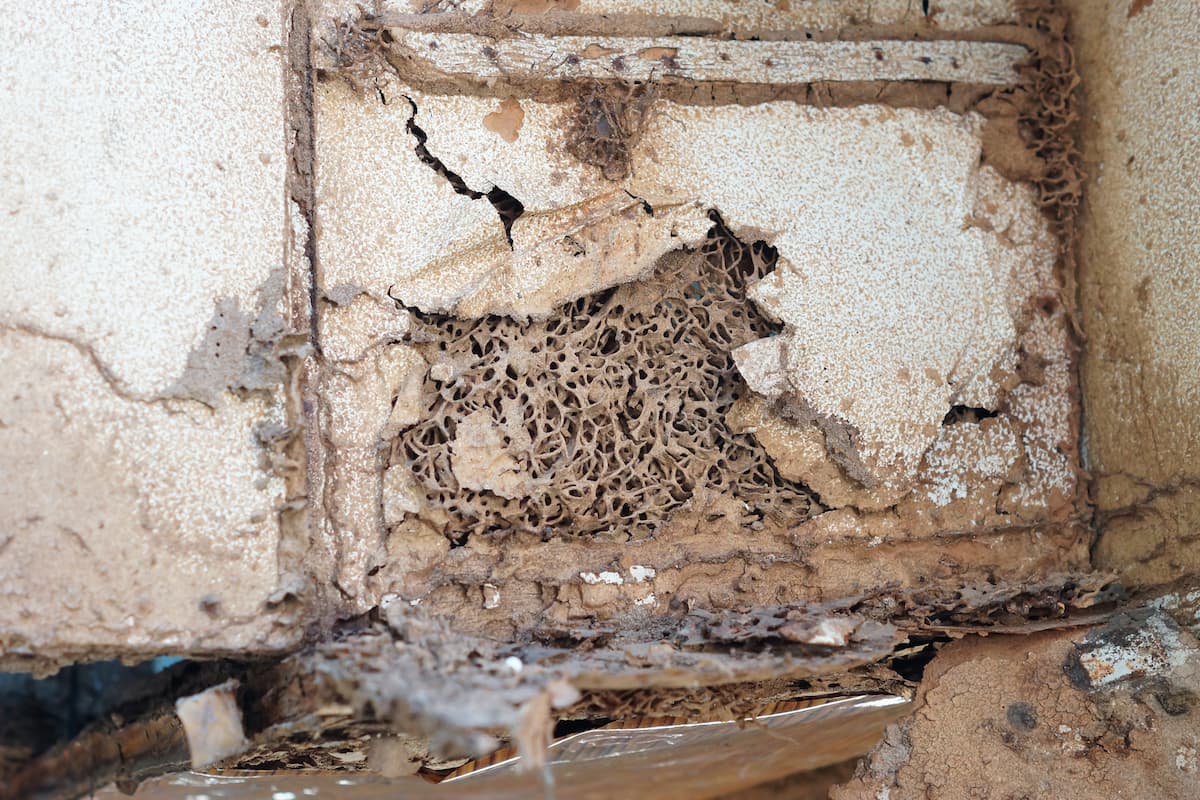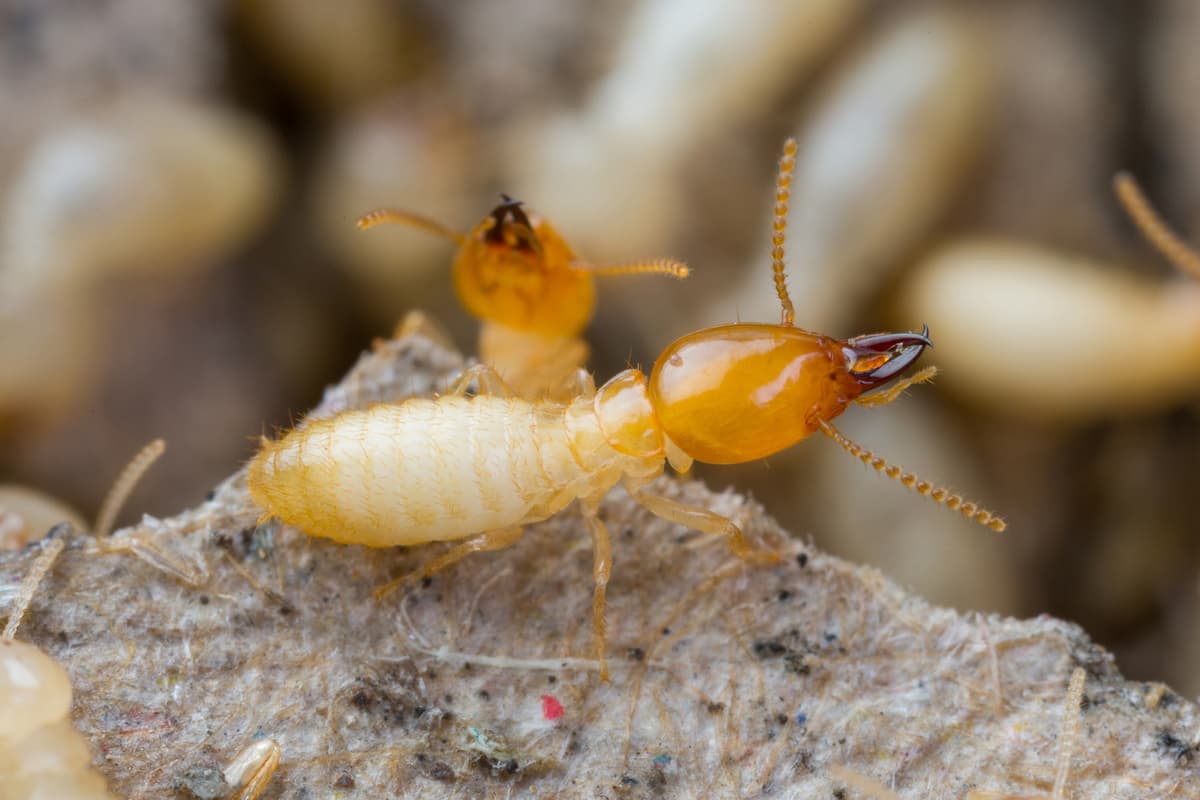How to Determine Age of Termite Damage?
If you have found termite damage in your home or property you are looking to buy, you will want to know if the insects are still around.
And if they aren’t there anymore, it’s helpful to be able to recognize how long they’ve been gone.
Unfortunately, though, it is practically impossible to determine the exact age of termite damage. However, by examining the damage and looking for signs of termites, you can figure out whether you have an active termite problem that you need to fix.
5 Signs of an Active Termite Infestation

To figure out if you currently have a termite infestation, you need to search your property for the following signs.
1. Termites
The easiest way to determine whether or not you have an active termite infestation is to look for the actual insects.
Thus, you should carefully examine any wooden areas of your home to see if you can find termites.
You should pay close attention to cracks and crevices in wood because these areas are where termites prefer to hide.
Additionally, don’t forget to inspect wooden objects in your yard, such as tree stumps and outdoor furniture, for termites.
If you find any termites on these items, your home is at high risk of termite damage, and the damage you already found might be new.
2. Mud Tunnels
Not all termites make mud tunnels, but subterranean termites do, and they are the most common type of termite in the US.
Yet, finding mud tunnels on your property doesn’t necessarily mean you have active termites.
So, you need to perform a simple test on the tunnels to find out if termites are still using them.
In this test, all you need to do is break off a piece of the mud tunnel and then wait a few days.
If that portion of the mud tunnel has returned or shows signs of repairs, you have an active infestation.
Remember, though, that, as I said, not all termites make mud tunnels.
Therefore, don’t think that just because you don’t see any mud tunnels on your property, you don’t have termites.
3. Termite Droppings
Just like everything else in the animal kingdom, termites need to poop.
And they poop quite a bit.
So, you should search your home for termite droppings.
If you don’t see any, the termite damage you have is probably old.
Yet, if you do see termite droppings, you shouldn’t automatically assume they are fresh.
Instead, clean up the droppings and then, after a few days, check for fresh excrement.
If you find new feces marks, you have an active infestation.
4. Termite Wings
In a termite colony, some of the members, called swarmers, have wings.
And these termites drop their wings when they find a mate.
Therefore, if you find fresh termite wings around your home, you probably have an ongoing termite infestation.
5. Wall Blisters
If you suddenly find blisters on your walls that look like water damage, you may have an active termite infestation.
Why Is it So Hard to Determine the Age of Termite Damage?
In short, it is hard to tell the age of termite damage because too many different factors affect how much termites eat.
Of course, many people have tried to come up with a calculation that will determine the exact amount of damage a termite colony can cause in a specific timeframe.
However, these calculations will not give you reliable information because they can never account for all the possible factors that affect how much a termite colony will eat.
How Long Does it Take Termites to Do Significant Damage?

Unfortunately, it is hard to determine how long it will take termites to do significant damage to a building.
Yet, I can say that it typically takes about three to eight years before a termite colony has caused extensive harm to a home.
But, how long it will be before termites inflict severe damage depends on many factors, such as the type of termite that has infested the house.
Like, for instance, subterranean termites can destroy a home much faster than other types of termites.
So, overall, if you have termites in your home, you should start trying to eradicate them immediately.
If you wait, you may have to perform large-scale repairs or even demolish the building.
How Can I Identify a Termite From Other Insects?
As I said above, finding termites in or around your home is the best way to know if your termite infestation is ongoing.
But, of course, to determine if an insect is a termite, you need to know what termites look like compared to other bugs.
Therefore, below, I will describe some of the most common termites you will see around your home.
Worker Termites
Of all the termites in the colony, you are most likely to see the worker termites because they make up about 90% of the entire group.
You can distinguish worker termites because they have light tan bodies that almost seem transparent.
They are also quite small at only about ⅛ of an inch (⅓ cm).
In general, they look kind of like light-colored ants, except their bodies aren’t as segmented.
Soldier Termites
Soldier termites can have quite different appearances depending on the species.
However, you can generally identify them by their long heads and large pinchers.
They are also about the same size as the worker termites or sometimes slightly larger.
And they range in color from light tan to black.
Additionally, these termites usually have a different color on and below their pinchers.
Swarmer Termites
Swarmer termites can look quite unlike other termites because they have long wings on their backs.
But, in general, their bodies don’t look much different from worker termites, and they range in color from light tan to black.
Also, you should keep in mind that people often mistake swarmer termites and flying ants.
The easiest way to differentiate between the two is to look at their bodies.
Flying ants have three distinct sections of their bodies, whereas the body of a swarmer termite looks more like a cylinder.
Is it Dangerous to Have Termites in My Home?

In most cases, having termites in your home is not dangerous.
Termites normally do not cause harm to humans in the way that roaches or bed bugs do.
Yet, having termites in your house could cause allergic reactions in some people and may also worsen asthma.
Furthermore, those with wood dust sensitivities might find it uncomfortable to live in a home with termites.
Besides these possible health hazards, the only time it is dangerous to live in a home with termites is if they have caused severe damage to the house.
For instance, termites can damage floors or stairs to the point that they could cave in if someone walks on them.
Thus, you really shouldn’t enter a home that has severe termite damage, or else you could get badly injured.
Is it Hard to Get Rid of an Active Termite Infestation?
Yes, it can be pretty hard to eradicate an active termite infestation.
Therefore, you should consider the expense if you are thinking about buying a home with a termite infestation.
Conclusion
Unfortunately, you can’t really determine the age of termite damage.
However, you can use certain methods to figure out if you have an active infestation.
Table of Contents
- 5 Signs of an Active Termite Infestation
- Why Is it So Hard to Determine the Age of Termite Damage?
- How Long Does it Take Termites to Do Significant Damage?
- How Can I Identify a Termite From Other Insects?
- Is it Dangerous to Have Termites in My Home?
- Is it Hard to Get Rid of an Active Termite Infestation?
- Conclusion
